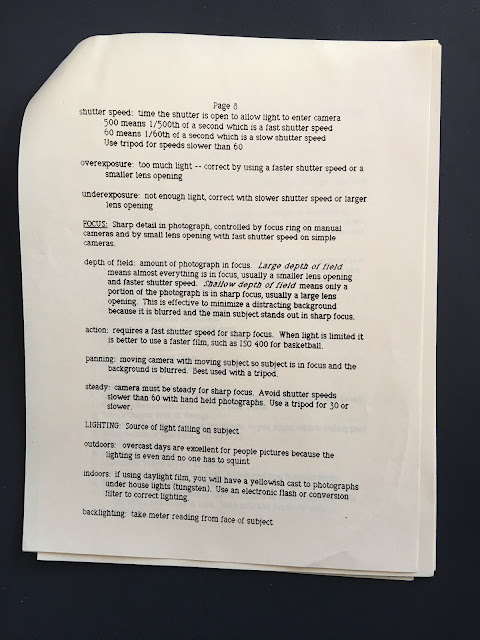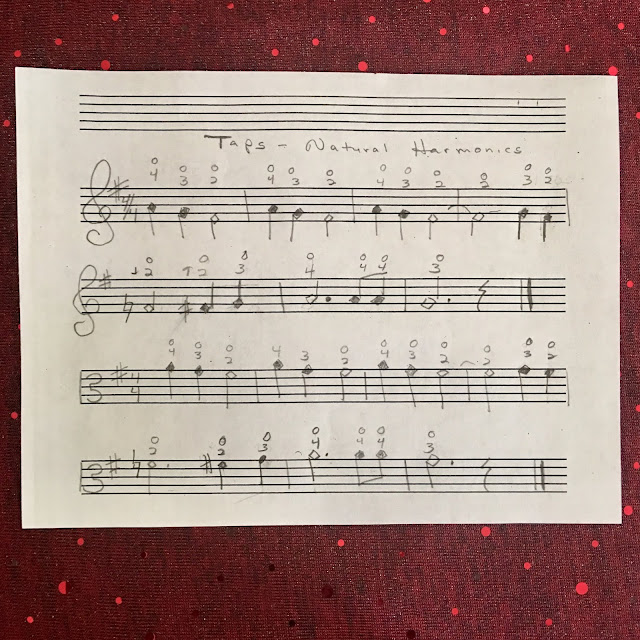In the past I have taught high school photography in Texas and a course for Elderhostel at SUU. The cameras were 35 mm before digital, but many of the concepts are still useful. It was wonderful to introduce people from all over the country to our beautiful southern Utah landscapes in the Elderhostel program. Coming in through the tunnels to Zion was wonderful with people who were seeing it for the first time. Many of the technical points are from Kodak publications. (Photos by Sara Penny, unless otherwise noted.)
 |
| Zion National Park pulpit view in late winter. |
 |
| Three armed basketball player shows how a merger with the background impacts photography. Trees can appear to grow out of people's heads. Look twice and see how background is positioned with your subject. This was taken by a student at Forest Park High School when I was the photography and journalism teacher while we lived in Beaumont, Texas. |
 |
| Guidelines are for a 35mm camera, but still useful ideas for digital. |
 |
| These were examples from magazines. Watch for reflections. |
 |
| For my digital camera I keep flash off most of the time. |
 |
Example from a magazine. It is fun to create your own still life arrangements.
A white poster board may be used for a reflector. |
 |
| This is an example from a magazine using silhouettes with sunset for drama. |
 |
| Example from a magazine with back lighting and silhouette. |
 |
| I have done a fair bit of publicity over the years over the years for arts groups. It is hard to see the dots on this Dracula for the Beaumont Community Theater, but basically you need the highest resolution possible for newspapers because of the process of preparing a photo for printing. |
 |
| A model release is needed if you are using the image for any income. Be super careful about photos of children for protection and security. Photos shot at public events should not include child's name without parental permission. |
 |
| My husband, Des Penny, provided diagrams to explain the focal length and how the camera lens works. Check on what is in focus carefully. The closer you get with the camera to a face or other subject the more the background blurs. This can be effective if the main subject is well focused. |
More Examples for Enjoying Your Photography:
 |
Spontaneous moments make more memorable images.
Philomena Penny reading Dr. Suess to Rachel. |
 |
| Closer is often more dramatic. Sunflower patterns. |
 |
| Anticipate the moment. Des Penny took this photo of Sally Hunter Jensen singing with Julie Beck at the piano during an Orchestra of Southern Utah recital. |
 |
| Where is your focus? Let the background blur to bring out your subject. |
 |
| Watch for reflections. Water and mirrors can add another dimension. |
Take lots of images and then when editing you can freeze your favorite moment.
 |
| The Hamlet statue with a full moon was a chance moment. I liked the curving leading line of the path. |
Triangle of moon, lights, and statue add to the composition.
 |
| Look for contrasts. Here we have spring green, red hills, and snow still on the mountain. |
 |
| Cloudy skies have more drama than an empty sky. Zion overlook. |
Take one subject and practice with different lighting and angles.
 |
| lily with Christmas tree lights in background for sparkle |
 |
| Flash in dark makes the subject pop. |
 |
| Backlighting changes the color intensity, plus the contrast of the yellow lily against outdoor snow. |
 |
| Viewpoint from above. Try different angles. |
 |
| Getting really close reveals a new view. |
 |
| Use framing, backlighting and an upward view angle. |
 |
| More traditional view, try to have a simple background to draw eyes to subject. |
 |
| Change the viewpoint. |
 |
A favorite photo by Des Penny at an Orchestra of Southern Utah Jubilee. Brandon Wiggins, SUU scientist, provided an amazing science display while Carylee Zwang conducted.
A great example of anticipating the moment. |
Enjoy your photography journey.









































Comments
Post a Comment